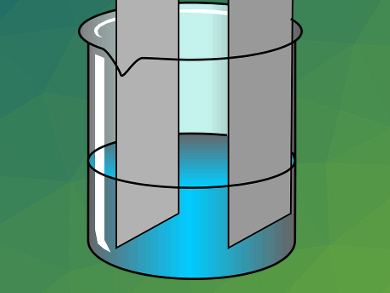Water splitting, i.e., converting water to H2 and O2, could enable the widespread use of hydrogen as an energy source. Efficient electrocatalysts are needed for water splitting. Developing materials that can catalyze both the hydrogen evolution reaction (HER) and the oxygen evolution reaction (OER) has been challenging.
Xun Wang and colleagues, Tsinghua University, Beijing, China, have created an efficient water splitting catalyst using microporous NiCoFe phosphate nanosheets supported on a Ni foam. The synthesis involves a single step, low-temperature hydrothermal method, which gives an amorphous, porous, ultrathin NiCoFe phosphate nanomaterial. The resulting material provides a low-resistance ion transport process during electrochemical reactions. Additionally, the structure has a high number of defects and a large surface area, which both promote the catalytic activity.
The catalyst has a high stability and high efficiencies for both OER and HER reactions, even in highly alkaline conditions. During OER reactions, the NiCoFe phosphates on the catalyst surface were oxidized into NiCoFe hydroxides/oxides, and the resulting catalyst needs only a low overpotential of 240 mV to reach a current density of 10 mA cm–2. For HER reactions, an overpotential of only –213 mV is required to produce the same current density.
- Microporous 2D NiCoFe phosphate nanosheets supported on Ni foam for efficient overall water splitting in alkaline media,
Muhammad Aurang Zeb Gul Sial, Haifeng Lin, Xun Wang,
Nanoscale 2018, 10, 12975–12980.
https://doi.org/10.1039/c8nr03350a




